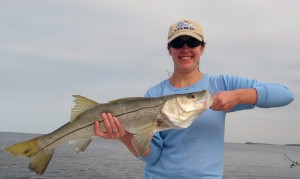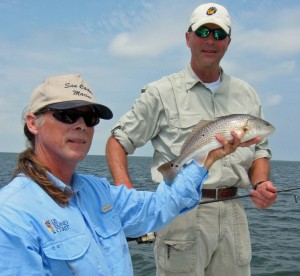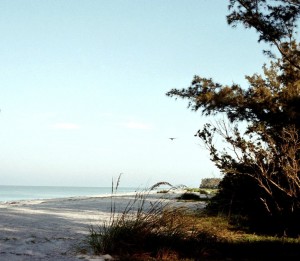Paradise Preserved
How great is Sanibel Island off southwest Florida’s Gulf Coast?
I returned from my first Sanibel sojourn to become a devoted lottery player, religiously investing $5 a week in hopes of a win big enough to finance a future of permanent beachcombing. Although my husband still won’t fork over cash for lottery tickets, he has abandoned his lifelong derision—“Why don’t you just burn the money?”—of gambling. A little dose of Sanibel, including hooking his first tarpon and snacking on oysters plucked fresh from the Gulf, was enough to mellow his cynical heart.
Not that cynicism is an unreasonable reaction to the manufactured and plasticized “paradise” that Florida has become after a half century of relentless pillaging by agribusiness, media conglomerates and real estate developers.
Walt Disney, golf mania and spring break have turned much of the Sunshine State into a poster-child for paved-over paradise, with an economy anchored by gargantuan theme parks, a lifestyle centered on a gazillion monotonous golf courses, and a vacation culture devoted to the frenzied hedonism of the tiki bar. Still, despite all the razzle-dazzle hoopla of the 21st Century American vacation, some prefer the authentic flora and fauna that is Florida’s natural treasure. For those travelers, Sanibel Island and its smaller sister, Captiva, are paradise preserved.
Ponce de Leon called the southwest Florida coast “Costa des Caracoles” – Coast of Seashells—when he explored in 1513, and many shell hunters consider Sanibel, one of a string of barrier islands that stretch from Fort Myers’ Caloosahatchee River to Charlotte Harbor, their nirvana. By the tens of thousands, shells wash in with each tide—lightning whelks, heart cockles, calico scallops, rose tellins and dozens of other varieties. Devoted shellseekers are easy to spot because of their distinctive hunched-over stance—the Sanibel stoop—and the boxy shell rakes they carry. The significance of shells in human history, including their use in art, religion, currency and decoration, plus a world-class collection from around the globe, join the scientific and educational exhibits at Sanibel’s Bailey-Matthews Shell Museum.
 For me, Sanibel’s shells are far outclassed by the island’s wildlife. In fact, my lottery habit dates from a memorable early morning beach walk to Lighthouse Point, where the 104-foot Point Ybel tower has guided mariners into San Carlos Bay since 1884.
For me, Sanibel’s shells are far outclassed by the island’s wildlife. In fact, my lottery habit dates from a memorable early morning beach walk to Lighthouse Point, where the 104-foot Point Ybel tower has guided mariners into San Carlos Bay since 1884.
As the pink light of dawn faded and the growing daylight turned the silvery sky and surf a deepening blue, a half dozen dolphins sliced through the Gulf just beyond the gentle breakers, swimming in time with my steps. Up  ahead, a patch of white sand came alive as a ghost crab scuttled toward the water. At my feet, a lapping wave deposited a bright blue jelly fish, a Portuguese Man-of-war, while stingrays darted through the shallows. A lumbering manatee lolled in the surf, its broad back splotched with barnacles. And in a tree near the lighthouse, a fish eagle watched six osprey diving for fish.
ahead, a patch of white sand came alive as a ghost crab scuttled toward the water. At my feet, a lapping wave deposited a bright blue jelly fish, a Portuguese Man-of-war, while stingrays darted through the shallows. A lumbering manatee lolled in the surf, its broad back splotched with barnacles. And in a tree near the lighthouse, a fish eagle watched six osprey diving for fish.
Restrictions on building heights have spared Sanibel the condominium towers that wall off the shore elsewhere in Florida, and perhaps as a result, the island’s beaches don’t seem crowded. In fact, from rustic Bowman’s Beach north to Blind Pass, Sanibel’s publicly-owned beach feels wild and pristine because a wide buffer of undeveloped land leaves miles of white sand fringed only by a tropical forest laced with walking paths.
Copyright 2002 © by Beth Quinn Barnard of text and photos. All rights reserved. Reproduction in whole or in part without permission is prohibited

No Responses to “Paradise Preserved”